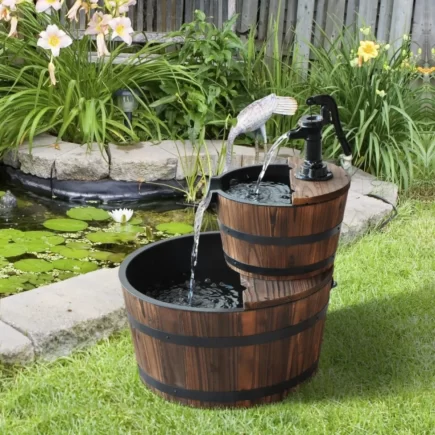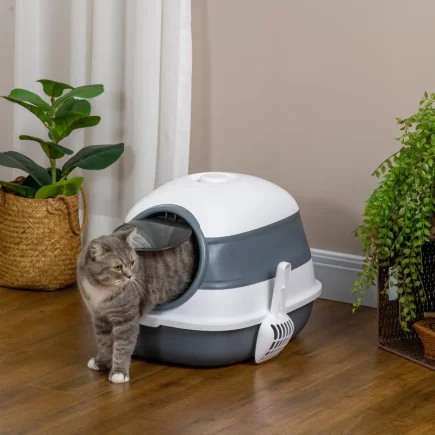People have been drying fruit for centuries to make it last longer and reduce waste. Today, you don’t need a big dehydrator to do it, an air fryer can handle the job. These handy appliances don’t just roast or bake; they can also remove moisture from fruit to create delicious dried snacks.

Air fryers are small, quick, and easy to use, which makes them perfect for making healthy, preservative-free treats at home. If you’ve ever wanted to turn fresh apples, bananas, or strawberries into chewy or crunchy bites, this guide will show you exactly how to dehydrate fruit step by step.
What You’ll Need Before You Start (Tools and Setup)
Essential Tools
Before starting, gather a few simple items to make the process easier:
| Tool / Supply | Purpose | Tips for Use |
| Cutting Board & Knife | Wash, peel, and slice fruit | A mandoline slicer ensures uniform slices |
| Lemon Water Bowl | Prevents browning of fruits like apples and bananas | Mix ¼ cup lemon juice + ¾ cup water |
| Parchment or Silicone Liner | Prevents sticking in basket | Make sure air can circulate freely |
| Tongs or Spatula | For flipping slices during dehydration | Check every 1–2 hours |
| Airtight Containers | Storage for finished fruit | Mason jars or vacuum-sealed bags are best |

Optional Accessories for Better Results
- Dehydrator racks: Expand space in basket-style fryers.
- Mandoline slicer: Speeds slicing for uniform results.
- Vacuum sealer: Extends storage life significantly.
Step 1: Select and Prepare the Fruit
Choosing the Right Fruit
You can dehydrate almost any fruit, but some are naturally better suited. Apples, bananas, strawberries, mangoes, pears, pineapples, peaches, and citrus slices dehydrate well.
Choose fruit that is ripe but firm. Overripe fruit may become mushy, while underripe fruit can lack sweetness.
Washing and Prepping Before Slicing
Wash fruit thoroughly to remove dirt and pesticides. Pat dry before slicing. Peel fruit with thick skins (like pineapples and mangoes), but thinner-skinned fruits (like apples or pears) can be left unpeeled for added texture.
Step 2: Slice Evenly for Consistent Results
Ideal Thickness for Different Textures
- Thin slices (1/8 inch) – crispier, chip-like texture
- Thicker slices (1/4 inch) – chewier, leathery texture

Why Uniform Cuts Matter
Uneven slices lead to uneven drying. Thin edges may burn while thicker sections remain moist. Use a mandoline slicer for best consistency.
Step 3: Prevent Browning With Lemon Water (Optional)
How to Prepare the Lemon Water Solution
Mix ¼ cup lemon juice with ¾ cup water in a bowl. Dip fruit slices for 2–3 minutes before dehydrating. This slows browning and adds a subtle tang.
Step 4: Arrange Fruit Properly in Basket or Racks

Using Baskets vs. Dehydrator Racks
- Basket-style air fryers: Arrange fruit in a single layer.
- Rack-style air fryers: Use multiple trays for larger batches.
Avoiding Overcrowding
Do not overlap slices. Air needs to flow around each piece for even drying. If making a large batch, work in smaller portions.
Step 5: Set the Right Temperature and Time
General Temperature Guidelines
Most fruits dehydrate well at 135°F. If your air fryer doesn’t go that low, use the lowest setting (often 150°F) and shorten drying time to prevent cooking.

Reference Table for Common Fruits
| Fruit Type | Temperature (°F) | Time Range (Hours) | Texture Result |
| Apples | 135 | 6–8 | Chewy to crisp |
| Bananas | 135 | 6–12 | Chewy or crunchy |
| Strawberries | 135 | 3–6 | Light and chewy |
| Pineapple | 135 | 6–10 | Sweet and pliable |
| Oranges | 135 | 6–8 | Decorative or edible |
| Mangoes | 135 | 6–8 | Flexible and chewy |
Step 6: Monitor Drying and Flip if Needed
When to Flip Slices
Flip every 1–2 hours if you notice uneven drying or sticking. Some models with strong airflow don’t require flipping.
How to Avoid Sticking
Use parchment paper or silicone liners lightly sprayed with oil. Avoid wax paper, which can melt.
Step 7: Check for Doneness
Signs Fruit Is Ready
- Dry to the touch but bendable.
- No sticky moisture on the surface.
- Slightly leathery, not brittle.
Common Mistakes at This Stage
- Removing too early – fruit spoils in storage
- Over-drying – brittle, burnt edges
Step 8: Allow Fruit to Cool Completely
Why Cooling Is Essential
Warm fruit continues releasing moisture. Storing it too soon creates condensation inside containers.
Best Cooling Practices
Spread fruit on a baking sheet or cooling rack for 30–60 minutes before sealing.
Step 9: Store Dehydrated Fruit Correctly for Longer Shelf Life
Best Storage Containers
- Mason jars
- Vacuum-sealed bags
- Airtight plastic or glass containers
Food Safety Guidelines to Avoid Spoilage
Preventing Mold and Moisture Build-Up
- Always dry fruit fully.
- If condensation forms inside storage, return fruit to the air fryer.
Recognizing Spoiled Fruit
Discard if you notice mold, sour smell, or sticky texture after storage.
Common Mistakes and Troubleshooting Tips
Fruit Too Chewy or Too Crispy
- Slice thinner or extend drying time for chewy results
- Use shorter drying times for crispier textures
Uneven Drying Issues
- Avoid overlapping slices
- Flip midway if necessary
Storage Problems
- Cool completely before sealing
- Use airtight containers only
Dehydrating fruit in an Air Fryer is straightforward: prepare, slice, arrange, set the right temperature, monitor, cool, and store. With practice, you’ll create snacks that are delicious, long-lasting, and free of added preservatives.
Whether you prefer crisp apple chips, chewy mango strips, or decorative citrus wheels, your air fryer makes it possible without needing extra appliances. It’s a simple method that fits modern kitchens while preserving a timeless tradition of healthy food.
FAQs
1. Can I dehydrate frozen fruit in an air fryer?
Yes, but it usually takes more time than fresh fruit. Always thaw frozen fruit first, then pat it dry with a paper towel to remove excess water. If you skip this step, the fruit may turn mushy and won’t dehydrate evenly.
2. Do all air fryers have a dehydrate function?
Not every air fryer comes with a dehydrate button. Some models only have regular cooking settings, but you can still dehydrate by using the lowest heat option available. The key is keeping the temperature low and steady for several hours.
3. What fruits are hardest to dehydrate in an air fryer?
Fruits with a lot of water, such as watermelon, grapes, or citrus, are harder to dry. They can stay sticky even after hours in the air fryer. If you want to try them, expect longer times and smaller, chewier results.
4. Can I rehydrate fruit after using an air fryer?
Yes, dehydrated fruit can be softened again by soaking it in water, juice, or broth. Leave it in liquid for about 15–30 minutes until it plumps back up. This is useful when adding dried fruit to baked goods, oatmeal, or savory dishes.





























